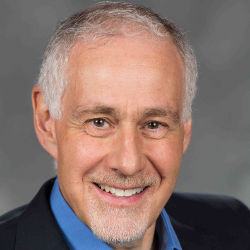
In an editorial last month, ACM CEO John White reported on the outcomes of the November 2013 ACM Strategic Planning Retreat. The retreat generated a number of important new ideas in the areas of membership, conferences, publications, community, and practitioners. While they are likely to have a significant impact on ACM’s activities going forward, I view them as defining only a relatively short-term agenda not fully addressing some deep issues facing ACM, issues we still need to understand and deal with.
The challenges and opportunities of open access served as the original motivation for holding the retreat. Despite setting the modern standard for a liberal copyright policy in the digital age (over a decade ago), opening more content under the discretion of ACM authors and SIGs, fully embracing Green/Gold/Hybrid OA publishing, and complying with government mandates, there is a sense among a portion of our community that we have still not done enough. A sense that if an ACM publication sits behind any sort of paywall—regardless of it also being freely available via an author’s site, an author’s institutional site, a SIG site, or even a conference site—we are somehow failing to meet our commitment to nurture the free flow of information.
This position informed much of the retreat discussion. It led to our decision to encourage SIGs to open conference proceedings around the event and until its next occurrence, and it led to our decision to begin work on understanding the "article of the future," in the broadest sense, along with the digital collection that might serve as host.
But what it failed to do is lead us into a discussion of whether there can (even should be) a model for ACM in which publication revenue plays little or no role.
ACM has a pretty straightforward business model. There are three major revenue streams: membership dues, conference registration fees, and publication subscription fees. Each has related sets of expenses. Membership runs at a loss—mainly because we subsidize students and members from developing countries. Conferences typically run at a surplus (not always—some conferences have lost considerable sums), but that surplus is retained by the SIGs and invested directly into serving and subsidizing their respective technical communities however they see fit. That leaves publications.
Right now, publications overall (but not universally) generate a surplus. That surplus is used to underwrite the membership loss associated with subsidies for students and developing countries, and to significantly supplement the operating funds flowing back to the SIGs.
It is also used to underwrite the programs our volunteers and members want, build, and run—but for which there is no revenue. This set of programs (sometimes referred to as the "good works" of ACM) includes: ACM-W—our 20-year effort to support and see more women succeed in computing; the Committee to Diversify Computing and the Tapia conference—activities focused on broadening participation in computing; CSTA—the organization for primary and secondary school computing teachers; the Education Policy Committee that advocates for policy changes to see real computer science taught in secondary schools; significant support for the Computing Research Association; USACM—the volunteer committee focused on six major areas of technology policy; ACM Europe/China/India—our efforts to increase our relevance in these regions by giving a special voice, visibility, and autonomy to our members there; the Education Board and its five-decade effort to develop and maintain international curriculum standards for computer science; Computer Science Education Week and Code.org—opening computing to millions of people around the world; and the Practitioner Board and its development of Queue and the Practice section of Communications.
These programs exist not because some abstract corporate entity ("the ACM") built them, but because members wanted them, and in many cases demanded they exist. And they thrive because the community is committed to funding the enormous work needed for each.
What we did not do at the retreat is look at a future ACM model in which there is no publication revenue and ask ourselves: "How do we the community do what we the community wants done having only membership dues and conference registration fees to support us?" But when segments of the community ask that ACM stop generating revenue from publications, we need to address this question. Of course, addressing the question will mean taking a fundamental look at membership structures and a fundamental look at how ACM conferences should be run. We need to face the fact that reducing or eliminating publication revenue is a choice that would have profound consequences for the entire ACM community.
As president, I am committed to engaging these hard questions; as a first step I will be establishing a Presidential Task Force to take a deep look specifically at future, long-term models for ACM. I also seek your personal input on the difficult choices we may need to make. We cannot simplistically engage in single-issue debates. I ask your help in finding a way forward that supports the broad interests and needs of all our members.
Alexander L. Wolf, ACM PRESIDENT



Join the Discussion (0)
Become a Member or Sign In to Post a Comment